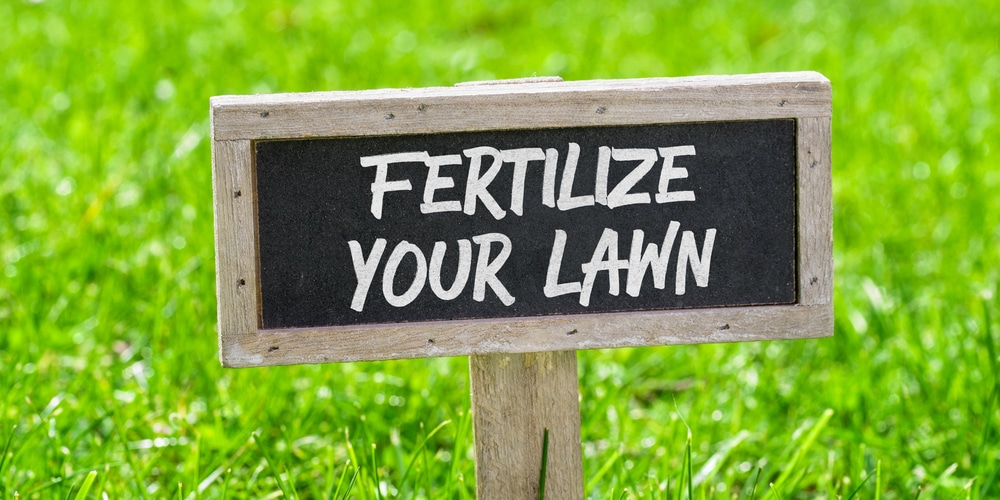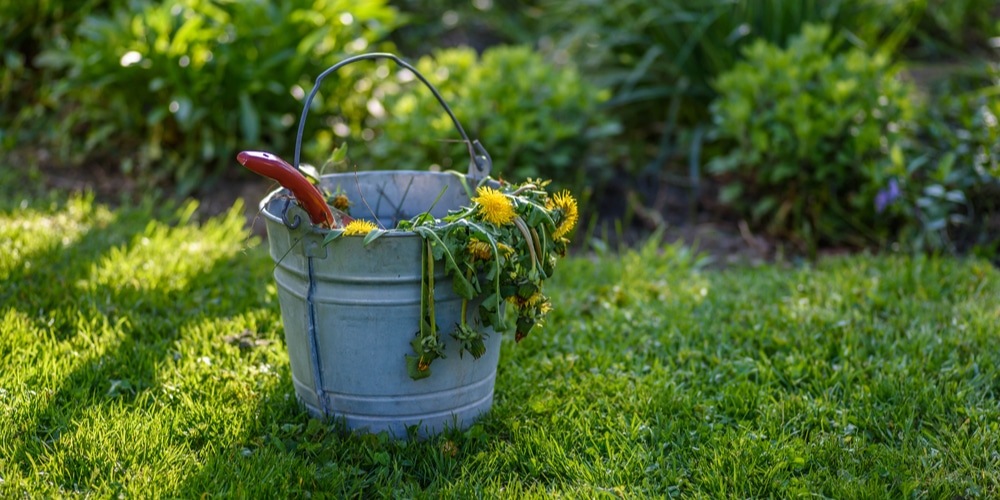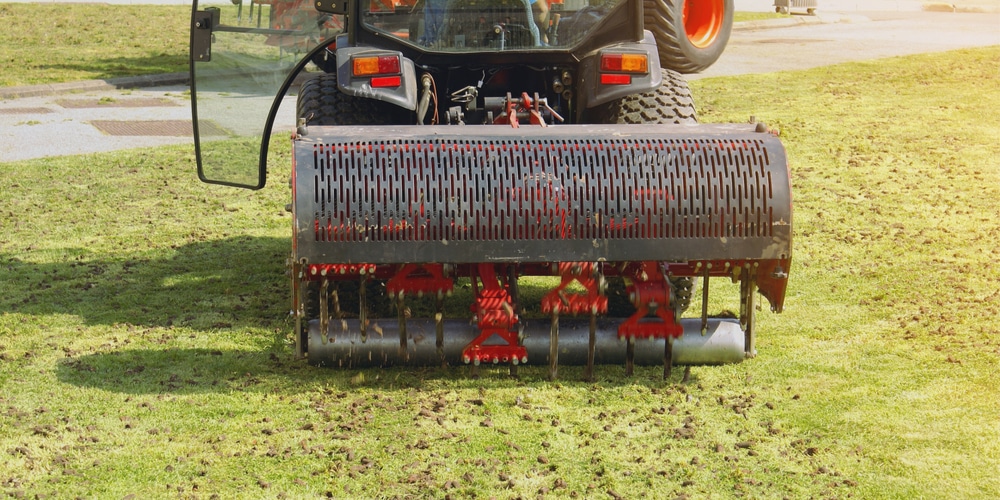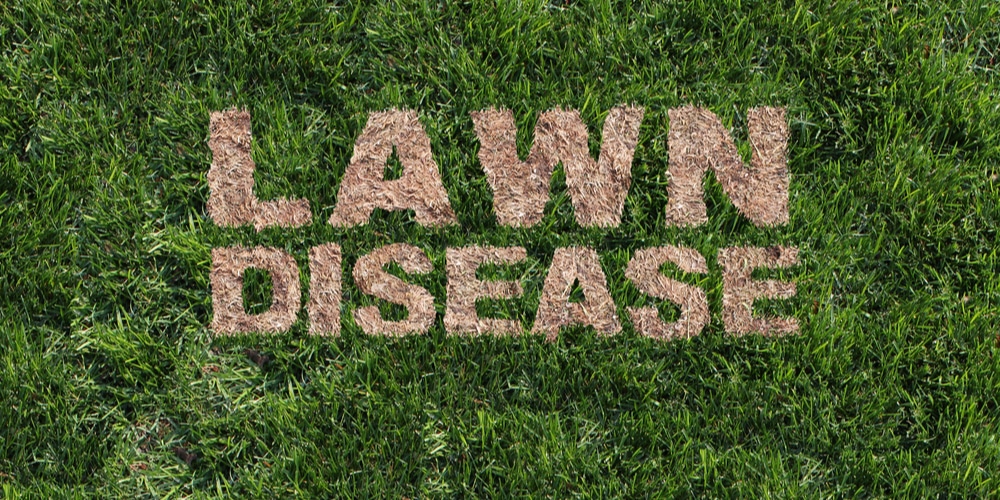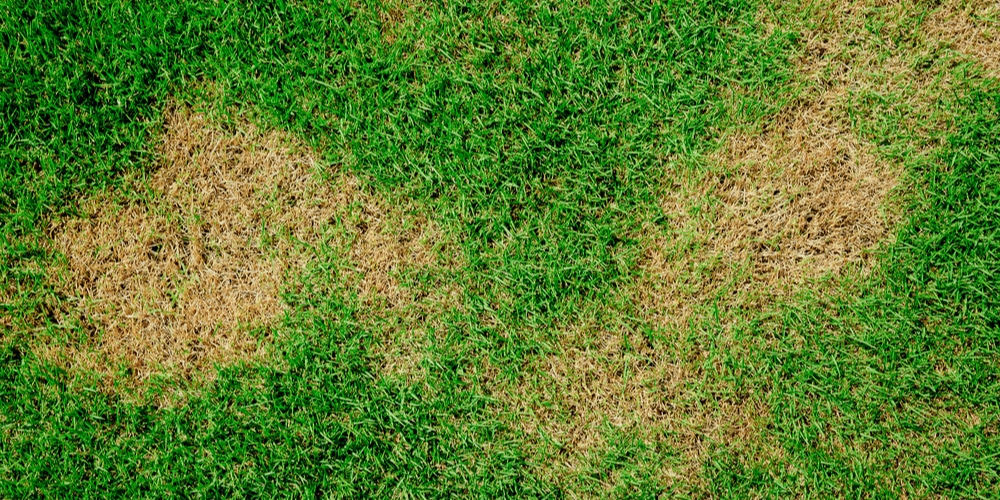To achieve a thick, green lawn, you’ll need to perform regular maintenance. This article will tell you how to make ryegrass thicker and healthier.
There are many reasons that ryegrass starts to thin out. The good news is that Ryegrass germinates fast, which means that it can be repaired fast.
Ryegrass Quick Facts
- Germinates fast
- Cool season grass
- Can handle light shade
- Good for quick patching
- Some varieties can handle droughts well
Mow Your Ryegrass Closer to the Ground
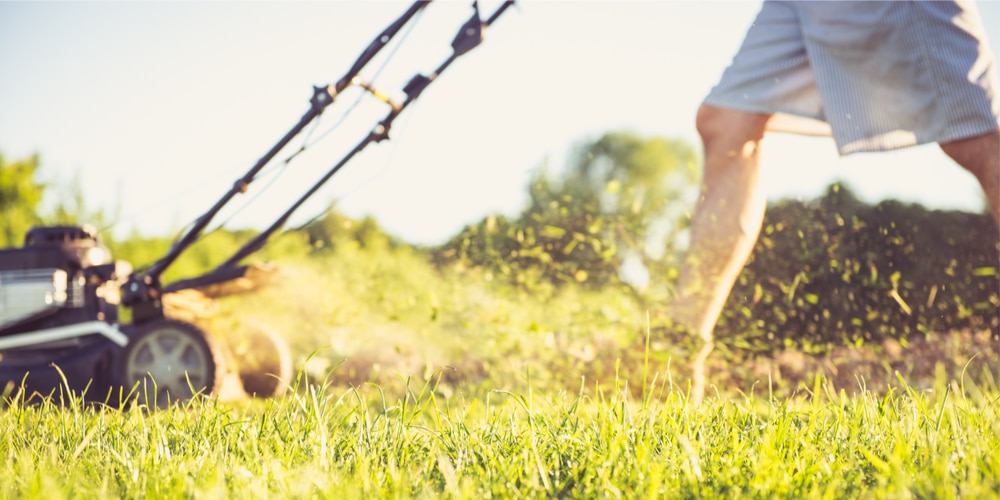
How you mow your lawn is significant when it comes to the health of ryegrass. Mowing your lawn will encourage the grass to grow and spread laterally instead of just growing taller.
To encourage ryegrass to become thicker, you can try mowing your lawn slightly lower than you usually would. It’s recommended that you mow ryegrass lawns to slightly lower than you normally would. The lowest you should cut ryegrass is 1 1/2″ (source). That height works for perennial or annual ryegrass. Anything lower than that and you are risking scalping your yard.
To mow your lawn so close to the ground, you’ll require the correct mower for the job. Use a lawnmower that has a sharp blade and can produce a clean-cut rather than hacking off the grass.
It’s also a good idea to mow ryegrass slightly more frequently if you want to encourage growth. Mowing can help to make ryegrass thicker, healthier, denser, and greener looking. After you’ve finished cutting your grass, you should turn on your sprinkler system and water your grass.
Use Ample Fertilizer on Your Ryegrass
During the spring and early summer, your lawn will begin to grow more. You can encourage this new growth by adding some fertilizer to the soil. It’s a good idea to carry out a soil test to determine whether your soil is low in nutrients. This will help you to decide things like the best fertilizer to use .
You may like to use a good quality general purpose fertilizer that provides nitrogen, phosphorus, and potassium to your lawn. Ensure that you read the fertilizer’s label and apply it in the correct ratio.
There are many benefits of applying fertilizer to ryegrass. It can stop your lawn from thinning out and looking patchy. It can also prevent diseases that affect grass, reduce weeds, and may also make your yard more drought-resistant. ryegrass will begin to thin out if there’s a drought, so it should be watered regularly with a sprinkler. You can also stop your lawn from being affected by drought by ensuring that the grass grows as dense as possible before the summer months.
Weed Your Ryegrass
Weeds can effectively choke your lawn and affect the health of your ryegrass. Yards that are full of weeds often have bare patches and thinning grass. The good news is that you can apply a herbicide to get rid of weeds. Alternatively, dig up weeds to give your grass more space to grow.
You may like to apply a pre-emergent herbicide to stop weeds from growing. Common weeds include poa annua, quack grass, and crabgrass (here’s the best crabgrass removal tools); these can be eliminated before they grow using a herbicide. It’s a good idea to use a pre-emergent herbicide in early spring to stop weeds from germinating.
If weeds have already begun to grow amongst your ryegrass, you’ll need a post-emergent herbicide. This type of herbicide is excellent for many weeds, including crabgrass and other broad-leaf grassy weeds. If you’re using a herbicide, it’s best not to apply it all over your lawn. Instead, focus on the areas that have weeds growing.
Quack grass can be very challenging to get rid of as they have a root system that spreads underground. If large areas of your lawn are affected, you’ll need to dig the roots up as best you can and use a herbicide to stop the plant from growing again. Here’s our guide to weeds that look like grass. This should help you find all the weeds that could be choking your ryegrass.
Aerate
Many people aerate their lawns in the spring or early summer. If you have a ryegrass lawn, it’s best to wait for new growth to aerate. When your lawn is looking greener, aerate it to encourage stronger and healthier growth. Here’s a step by step guide on how to aerate your lawn.
It’s best to aerate your lawn when the grass is short. If you live in an area with clay soil or have a yard with very hard-packed soil, it’s best to start aerating early as this can help promote better nutrients and allow the water to penetrate the soil.
You can aerate your lawn using a manual aeration tool or a garden fork if you have a small yard. Aerating can be a time-consuming process, but it is worth doing as it will help to improve the condition of your lawn. If you have a larger area of grass that needs to be aerated, you may also like to consider investing in a mechanical aerator, as this will speed up the whole process. Here’s how to overseed a lawn.
Treat Lawn Disease
A common reason for ryegrass looking thin or patchy is due to lawn disease. Many things affect the condition of grass, including fungal infections, insects, and grubs.
Common Fungal Problems
The most common types of fungal diseases that affect ryegrass are dollar spot, pythium blight, brown patch, and rust (source). These fungal diseases all reduce the speed that the grass grows at and makes the turf appear thin and patchy.
Related: How to Make Bermuda Thicker
Conclusion
Many things can affect the condition of your ryegrass. If you want to make ryegrass thicker it will take some work. It’s a good idea to fertilize your lawn, apply herbicides if you’re worried about weeds, and aerate your lawn. ryegrass also requires direct sunlight and enough water if it’s to thrive.
